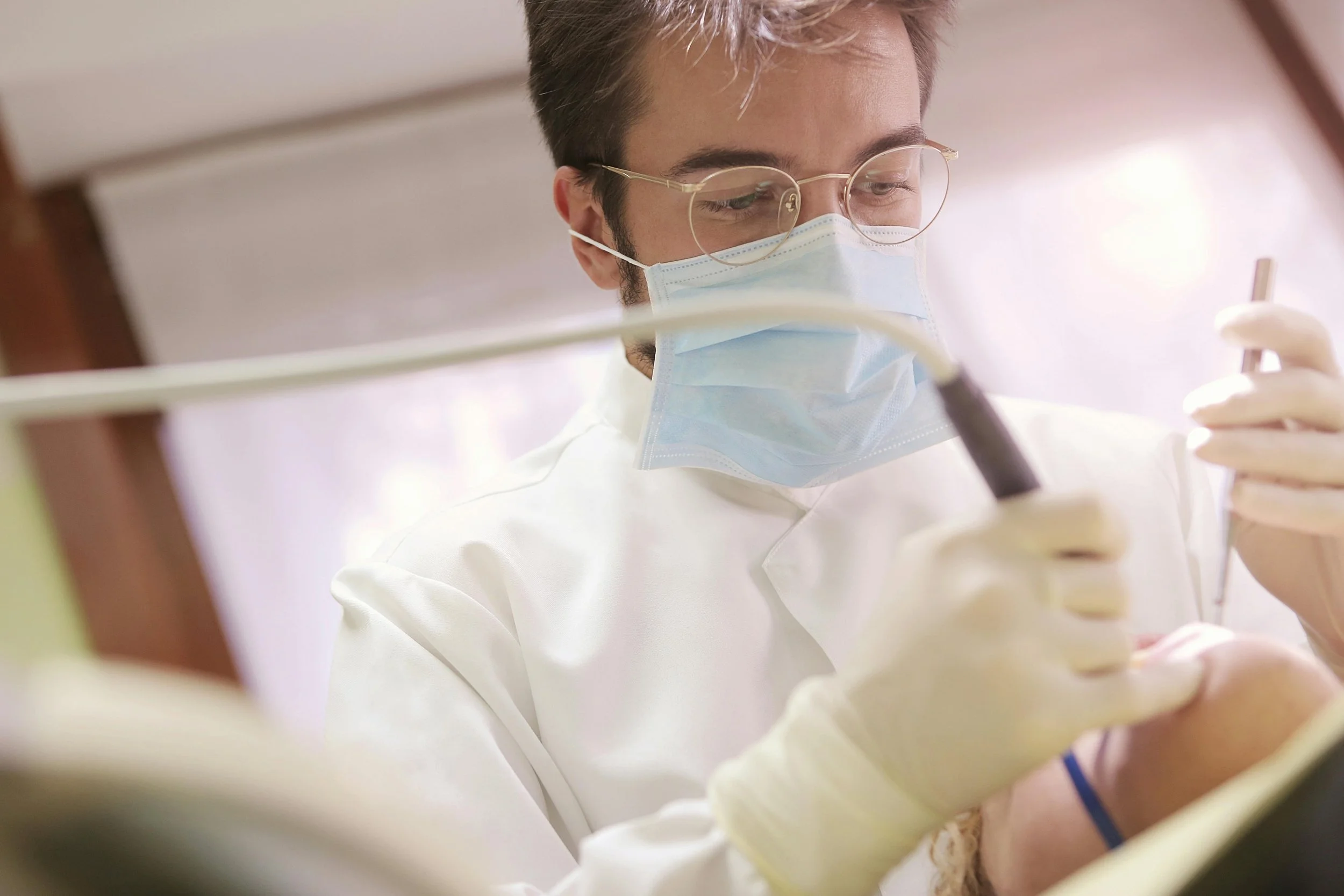You’ve probably heard of them, or maybe you’ve even had them removed, but what is a wisdom tooth, exactly? Often misunderstood, these molars are the last adult teeth to emerge, and they have a long history rooted in human evolution.
While some people never develop wisdom teeth, others struggle with pain, crowding, or infection caused by their arrival. Understanding what they are, why they grow, and when they may need to be removed can help you take better care of your oral health.
Navigating the Facts About Wisdom Teeth
-
What are wisdom teeth, and when do they appear?
-
Why do humans have them?
-
Why some people never get wisdom teeth
-
Common reasons for wisdom tooth removal
-
What to expect during evaluation or extraction
-
How a dentist can help
So, What Is a Wisdom Tooth?
A wisdom tooth is a third molar that typically erupts in the very back corners of the mouth, usually between the ages of 17 and 25. Most adults have four, one in each quadrant of the mouth, but it’s not uncommon to have fewer, or none at all. These teeth are considered “vestigial,” meaning they were useful to our ancestors but are largely unnecessary in modern life.
Wisdom teeth were helpful when early humans had a tougher diet made up of raw roots, leaves, and uncooked meat, foods that wore down teeth quickly. As jaw sizes shrank and diets evolved, the need for these extra molars decreased. However, the genetic blueprint for wisdom teeth still remains in many people.
When and Why Wisdom Teeth Appear
Wisdom teeth usually begin to form in the teenage years and can start pushing through the gums anywhere from ages 17 to 25. The process isn’t always smooth. Some people experience no issues at all, while others have significant pain, swelling, or pressure.
The late emergence of these teeth is why they’re called “wisdom” teeth. By the time they arrive, a person is typically older and (theoretically) wiser.
In many cases, problems arise because there simply isn’t enough room in the mouth for another set of molars. This lack of space can cause the teeth to emerge at odd angles or become impacted, meaning they are trapped below the gumline or partially erupted.
Why Some People Never Develop Wisdom Teeth
It’s entirely possible for individuals to never develop one or more wisdom teeth. This condition, called agenesis, occurs when the third molars simply never form in the jawbone. While this might seem unusual, it’s actually a result of both genetic variation and evolutionary change.
Over thousands of years, the human diet has shifted from tough, raw foods to softer, cooked meals. This dietary evolution, combined with the development of tools and cooking methods, has reduced the need for an extra set of molars.
As a result, our jaws have become smaller, leaving less room for wisdom teeth to emerge. In many people, nature is essentially “phasing out” the third molars because they’re no longer necessary for survival.
Several factors contribute to whether a person develops wisdom teeth, including:
-
Heredity: If your parents didn’t develop wisdom teeth, there’s a good chance you may not either. Genetic traits related to tooth development and jaw size are often passed down through generations.
-
Ethnic background: Studies have shown that certain populations are less likely to develop third molars. For example, individuals of Asian descent often have a higher rate of wisdom tooth agenesis compared to people of European or African ancestry.
-
Evolutionary adaptation: As the human skull has evolved, the structure of the jaw has changed. Smaller jawbones mean there is often insufficient space for wisdom teeth to erupt properly, which may be why fewer people are developing them at all.
For those who never develop wisdom teeth, this can actually be a fortunate twist of biology. It eliminates the risk of impaction, crowding, infection, or surgical removal, common issues associated with wisdom teeth.
Still, even in cases where wisdom teeth are absent, routine dental exams remain important to monitor the health of all existing teeth and surrounding structures.
When Wisdom Teeth Become a Problem

While not every wisdom tooth needs to be removed, many do. The decision is typically based on how the teeth are positioned, whether they’re fully or partially erupted, and if they’re causing, or are likely to cause, complications.
Because wisdom teeth are the last to emerge, they often encounter issues related to space and alignment. Here are the most common reasons dentists may recommend extraction:
Impaction
One of the most frequent issues is impaction, where the wisdom tooth fails to break through the gum completely or remains trapped beneath the surface. Impacted teeth can grow at odd angles, press against neighboring teeth, or stay lodged in the jawbone.
These conditions often lead to inflammation, infection, cyst formation, or even damage to nearby roots. In some cases, the impaction may not be immediately painful, but can still silently affect oral health over time.
Crowding
Even if wisdom teeth begin to erupt, they may push against adjacent teeth due to lack of space. This crowding can undo years of orthodontic work, shifting teeth out of alignment and affecting the bite.
It’s particularly concerning for people who’ve had braces or other corrective treatments. Removing wisdom teeth early can preserve alignment and reduce the risk of long-term complications.
Tooth Decay or Gum Disease
Because wisdom teeth are located at the very back of the mouth, they’re notoriously difficult to clean properly. This makes them more susceptible to tooth decay and gum disease.
Food and bacteria can become trapped around partially erupted teeth, leading to cavities, bad breath, and infections like pericoronitis (inflammation of the gum flap covering the tooth). In such cases, extraction is often the safest option to prevent the spread of decay or periodontal problems.
Pain and Swelling
Ongoing pain, tenderness, or swelling in the back of the mouth may indicate that wisdom teeth are putting pressure on surrounding tissues, nerves, or bone.
This discomfort can interfere with daily activities like chewing or speaking, and may worsen over time if the underlying issue isn’t addressed. Pain alone doesn’t always require extraction, but it’s a strong sign that a professional evaluation is needed.
Wisdom teeth that fully erupt, align properly with the rest of the teeth, and remain healthy may not need to be removed at all. However, it’s essential to monitor them regularly through dental checkups and panoramic X-rays.
These tools allow your dentist to detect potential problems before they become painful or complicated, especially since some issues may not cause symptoms until it’s too late for a simple fix.
What Happens During an Evaluation?
If your dentist suspects issues with your wisdom teeth, they’ll likely take a panoramic X-ray to examine root development and how the teeth are positioned. They’ll also assess whether there’s enough room in your jaw for the teeth to emerge naturally.
The timing of removal is important. Many extractions happen during late teens or early twenties because the roots aren’t fully formed yet, making the procedure easier and recovery quicker.
Delaying removal can increase the risk of complications like nerve damage, infection, or damage to adjacent teeth.
A trusted dental provider will guide you through the decision-making process and explain the benefits and risks based on your individual case.
What to Expect If Removal Is Needed

Wisdom tooth removal is a common oral surgery procedure. It can be done under local anesthesia, sedation, or general anesthesia, depending on the complexity of the case and the patient’s comfort level.
During the procedure, the dentist or oral surgeon makes an incision in the gum tissue, removes any bone blocking access to the tooth, and extracts the tooth—sometimes in pieces. The area is then cleaned, stitched (if needed), and allowed to heal over the following days or weeks.
Aftercare typically includes:
-
Rest and limited activity for the first 24–48 hours
-
Ice packs to reduce swelling
-
Soft foods and hydration
-
Avoiding straws, smoking, or anything that could disturb the blood clot
Healing time varies, but most patients recover in about a week.
Wisdom Teeth and Your Long-Term Oral Health
Even if your wisdom teeth aren’t causing pain now, it doesn’t mean they won’t in the future. Some dentists recommend proactive removal to avoid complications later in life. Others take a watchful approach, monitoring the teeth with regular X-rays.
What’s important is making the decision with the guidance of a trusted professional. A dentist near Sturgis can evaluate your wisdom teeth and help you understand the pros and cons of removal based on your anatomy, age, and dental history.
A Final Word on Wisdom Teeth
So, what is a wisdom tooth? It’s more than just the last molar to emerge, it’s a window into our evolutionary history, a biological leftover from a time when humans needed extra teeth to chew rough, unprocessed foods.
For some, wisdom teeth come in without incident. For others, they bring discomfort, crowding, or serious dental complications that require timely attention.
Whether you have all four, just one, or none at all, understanding the role of these molars, and the potential issues they can cause, empowers you to make informed decisions about your dental care.
Ignoring them can lead to avoidable problems like infection, shifting teeth, or jaw pain, while proactive monitoring and treatment can preserve your comfort and long-term oral health.
If you’re experiencing symptoms or simply want to know where your wisdom teeth stand, a consultation with your local dental provider can offer valuable insight.
References
-
American Dental Association. “Wisdom Teeth.” https://www.ada.org
-
Mayo Clinic. “Wisdom tooth extraction.” https://www.mayoclinic.org
-
Cleveland Clinic. “Wisdom Teeth: What to Know.” https://my.clevelandclinic.org
-
Colgate Oral Care Center. “Why Do We Have Wisdom Teeth?” https://www.colgate.com
